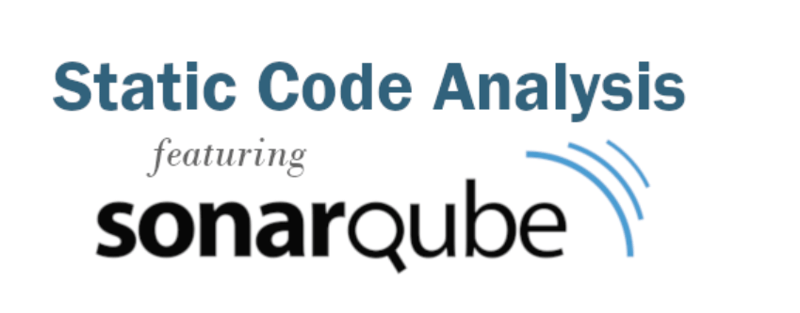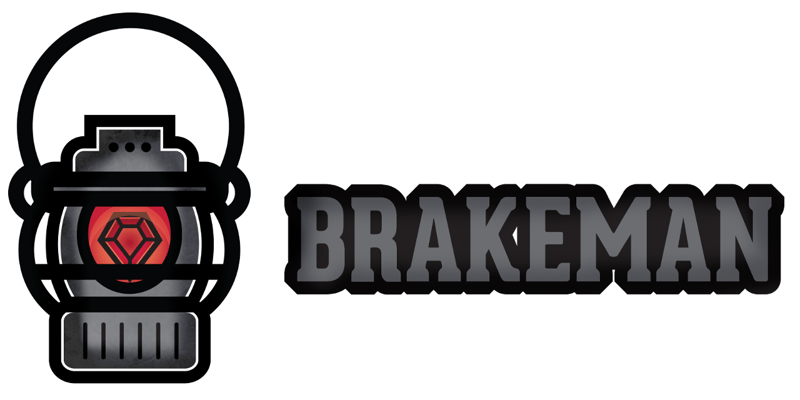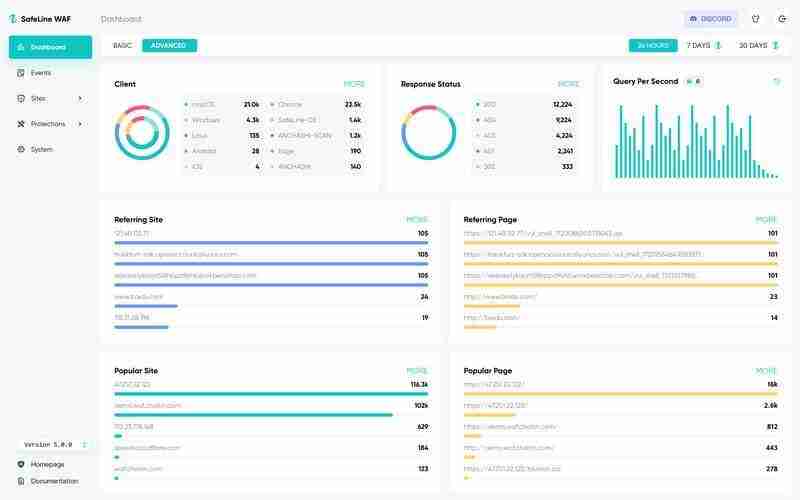Open Source Tool List for Web App Security
Securing web applications is a critical task for developers and security professionals alike. For beginners, understanding and implementing web app security can seem daunting. Fortunately, there are numerous open source tools available that can help you build a solid security foundation.
This article provides a comprehensive list of essential open source tools for web app security, perfect for beginners looking to secure their applications.
1. Static Code Analysis
Static code analysis tools help identify vulnerabilities in the source code before the application is deployed. These tools are crucial for finding security flaws early in the development process.
SonarQube
Description: An open-source platform for continuous inspection of code quality, which performs automatic reviews to detect bugs, code smells, and security vulnerabilities.
Usage: Integrate SonarQube into your CI/CD pipeline to continuously monitor and improve your code quality and security.

Brakeman https://github.com/presidentbeef/brakeman
Description: A static analysis security vulnerability scanner specifically designed for Ruby on Rails applications.
Usage: Use Brakeman to scan your Rails codebase and identify potential security issues during development.

2. Dynamic Code Analysis
Dynamic code analysis tools test the running application to identify security vulnerabilities by simulating attacks.
OWASP ZAP (Zed Attack Proxy)
Description: An open-source tool designed to find security vulnerabilities in web applications during the development and testing phases.
Usage: Use ZAP to intercept and inspect HTTP traffic, perform automated scans, and identify security issues.
w3af (Web Application Attack and Audit Framework)
Description: An open-source web application security scanner that helps identify and exploit vulnerabilities.
Usage: Employ w3af to scan your web application for vulnerabilities and understand their impact.
3. Dependency Management and Vulnerability Scanning
Dependency management tools help track and manage third-party libraries and their associated vulnerabilities.
OWASP Dependency-Check
Description: A tool that identifies project dependencies and checks if there are any known, publicly disclosed vulnerabilities.
Usage: Integrate Dependency-Check into your build process to automatically scan for vulnerabilities in your dependencies.
Snyk
Description: Although Snyk offers paid plans, its core features for open source vulnerability scanning are available for free.
Usage: Use Snyk to scan your projects for vulnerabilities and receive actionable advice on how to fix them.
4. Network and Application Scanning
Network and application scanning tools help identify vulnerabilities and misconfigurations in the network and application layers.
Nmap
Description: A powerful open-source network scanning tool used to discover hosts and services on a network.
Usage: Use Nmap to scan your network for open ports and services that could be potential entry points for attackers.
Nikto
Description: An open-source web server scanner that tests for a variety of issues, including outdated server software and dangerous files.
Usage: Run Nikto against your web server to identify common security issues and misconfigurations.
5. Web Application Firewalls (WAF)
Web application firewalls help protect web applications by filtering and monitoring HTTP traffic between a web application and the internet.
SafeLine
https://waf.chaitin.com/
Description: A docker-based, easy to use, self-hosted free WAF that provide real-time web application monitoring and access control.
Usage: Configure SafeLine to filter and monitor HTTP requests to your web application, blocking malicious traffic.

6. Security Headers
Security headers protect web applications from various types of attacks by setting HTTP headers that enforce security policies.
SecurityHeaders.io
Description: A free tool that analyzes the HTTP response headers of your web application and provides a grade based on the presence and configuration of security headers.
Usage: Regularly check your web app’s security headers with SecurityHeaders.io and configure them to enhance security.
Helmet.js
Description: A middleware for Express.js applications that helps secure the app by setting various HTTP headers.
Usage: Integrate Helmet.js into your Express app to improve security by setting appropriate HTTP headers.
7. Content Security Policy (CSP)
Content Security Policy (CSP) helps prevent cross-site scripting (XSS) and other code injection attacks by specifying which sources are trusted.
CSP Evaluator
Description: A tool by Google that helps evaluate and improve your Content Security Policy.
Usage: Use the CSP Evaluator to analyze and refine your CSP, reducing the risk of XSS and other injection attacks.
8. Penetration Testing Frameworks
Penetration testing frameworks provide a suite of tools for performing comprehensive security assessments of web applications.
Metasploit
Description: A widely used open-source penetration testing framework that helps in discovering, exploiting, and validating vulnerabilities.
Usage: Use Metasploit to conduct penetration tests on your web application, understanding and mitigating security risks.
9. Learning Resources
Educational resources are essential for understanding the fundamentals of web application security and staying updated with the latest threats and defenses.
OWASP Top Ten
Description: A list of the top ten most critical web application security risks, along with explanations and recommendations for mitigation.
Usage: Familiarize yourself with the OWASP Top Ten to understand common vulnerabilities and how to prevent them.
Web Security Academy by PortSwigger
Description: An interactive learning platform offering labs and tutorials on various web security topics.
Usage: Use the Web Security Academy to practice and improve your web application security skills through hands-on labs.
Cybrary
Description: An online platform offering free and paid courses on cybersecurity topics, including web application security.
Usage: Enroll in Cybrary courses to gain in-depth knowledge and skills in web application security.
Conclusion
By leveraging these open source tools and resources, beginners can start building a robust security posture for their web applications. Continuous learning and staying updated with the latest security practices and threats are essential, as web security is an ever-evolving field. Start with these tools to lay a strong foundation and protect your web applications effectively.
-
 How do Java developers protect database credentials from decompilation?Protecting Database Credentials from Decompilation in JavaIn Java, decompiling class files is relatively straightforward. This poses a security concer...Programming Posted on 2025-04-14
How do Java developers protect database credentials from decompilation?Protecting Database Credentials from Decompilation in JavaIn Java, decompiling class files is relatively straightforward. This poses a security concer...Programming Posted on 2025-04-14 -
 How to create a smooth and responsive multi-level CSS drop-down menuAchieving a Sleek Multi-Level CSS Drop-Down MenuIn the realm of web design, creating user interfaces that seamlessly guide visitors through your conte...Programming Posted on 2025-04-14
How to create a smooth and responsive multi-level CSS drop-down menuAchieving a Sleek Multi-Level CSS Drop-Down MenuIn the realm of web design, creating user interfaces that seamlessly guide visitors through your conte...Programming Posted on 2025-04-14 -
 How to correctly assign NULL values to date and time fields in MySQL?How to Handle NULL Values in MySQL Datetime FieldsMySQL accepts NULL values in datetime fields, despite the common misconception. To assign a NULL val...Programming Posted on 2025-04-14
How to correctly assign NULL values to date and time fields in MySQL?How to Handle NULL Values in MySQL Datetime FieldsMySQL accepts NULL values in datetime fields, despite the common misconception. To assign a NULL val...Programming Posted on 2025-04-14 -
 Await and Task.Wait: When will synchronous blocking dielock?await and Task.Wait in asynchronous programming: Deadlock trap]] In asynchronous programming, it is crucial to understand the difference between awai...Programming Posted on 2025-04-14
Await and Task.Wait: When will synchronous blocking dielock?await and Task.Wait in asynchronous programming: Deadlock trap]] In asynchronous programming, it is crucial to understand the difference between awai...Programming Posted on 2025-04-14 -
 How Can I Execute Multiple SQL Statements in a Single Query Using Node-MySQL?Multi-Statement Query Support in Node-MySQLIn Node.js, the question arises when executing multiple SQL statements in a single query using the node-mys...Programming Posted on 2025-04-14
How Can I Execute Multiple SQL Statements in a Single Query Using Node-MySQL?Multi-Statement Query Support in Node-MySQLIn Node.js, the question arises when executing multiple SQL statements in a single query using the node-mys...Programming Posted on 2025-04-14 -
 How to avoid memory leaks when slicing Go language?Memory Leak in Go SlicesUnderstanding memory leaks in Go slices can be a challenge. This article aims to provide clarification by examining two approa...Programming Posted on 2025-04-14
How to avoid memory leaks when slicing Go language?Memory Leak in Go SlicesUnderstanding memory leaks in Go slices can be a challenge. This article aims to provide clarification by examining two approa...Programming Posted on 2025-04-14 -
 How can I safely concatenate text and values when constructing SQL queries in Go?Concatenating Text and Values in Go SQL QueriesWhen constructing a text SQL query in Go, there are certain syntax rules to follow when concatenating s...Programming Posted on 2025-04-14
How can I safely concatenate text and values when constructing SQL queries in Go?Concatenating Text and Values in Go SQL QueriesWhen constructing a text SQL query in Go, there are certain syntax rules to follow when concatenating s...Programming Posted on 2025-04-14 -
 Is There a Performance Difference Between Using a For-Each Loop and an Iterator for Collection Traversal in Java?For Each Loop vs. Iterator: Efficiency in Collection TraversalIntroductionWhen traversing a collection in Java, the choice arises between using a for-...Programming Posted on 2025-04-14
Is There a Performance Difference Between Using a For-Each Loop and an Iterator for Collection Traversal in Java?For Each Loop vs. Iterator: Efficiency in Collection TraversalIntroductionWhen traversing a collection in Java, the choice arises between using a for-...Programming Posted on 2025-04-14 -
 Go语言Rand包生成真正随机数的技巧Troubleshooting Pseudo Random Number Generation in Go with the Rand PackageQuestion:The rand package in Go provides the Int31n function to generate ps...Programming Posted on 2025-04-14
Go语言Rand包生成真正随机数的技巧Troubleshooting Pseudo Random Number Generation in Go with the Rand PackageQuestion:The rand package in Go provides the Int31n function to generate ps...Programming Posted on 2025-04-14 -
 How do you extract a random element from an array in PHP?Random Selection from an ArrayIn PHP, obtaining a random item from an array can be accomplished with ease. Consider the following array:$items = [523,...Programming Posted on 2025-04-14
How do you extract a random element from an array in PHP?Random Selection from an ArrayIn PHP, obtaining a random item from an array can be accomplished with ease. Consider the following array:$items = [523,...Programming Posted on 2025-04-14 -
 How to create dynamic variables in Python?Dynamic Variable Creation in PythonThe ability to create variables dynamically can be a powerful tool, especially when working with complex data struc...Programming Posted on 2025-04-14
How to create dynamic variables in Python?Dynamic Variable Creation in PythonThe ability to create variables dynamically can be a powerful tool, especially when working with complex data struc...Programming Posted on 2025-04-14 -
 How to extract RSA private key from PEM file in .NET?RSA Private Key Retrieval in .NET from PEM FormatIn .NET, reading a PEM-formatted RSA private key and initializing an RSACryptoServiceProvider instanc...Programming Posted on 2025-04-14
How to extract RSA private key from PEM file in .NET?RSA Private Key Retrieval in .NET from PEM FormatIn .NET, reading a PEM-formatted RSA private key and initializing an RSACryptoServiceProvider instanc...Programming Posted on 2025-04-14 -
 How to Combine Data from Three MySQL Tables into a New Table?mySQL: Creating a New Table from Data and Columns of Three TablesQuestion:How can I create a new table that combines selected data from three existing...Programming Posted on 2025-04-14
How to Combine Data from Three MySQL Tables into a New Table?mySQL: Creating a New Table from Data and Columns of Three TablesQuestion:How can I create a new table that combines selected data from three existing...Programming Posted on 2025-04-14 -
 Why does the Python master warn not to use "import *"?The Pitfalls of "import *": Why Experts Advise Against ItIn the realm of Python programming, the import statement plays a crucial role in ut...Programming Posted on 2025-04-14
Why does the Python master warn not to use "import *"?The Pitfalls of "import *": Why Experts Advise Against ItIn the realm of Python programming, the import statement plays a crucial role in ut...Programming Posted on 2025-04-14 -
 How to flatten nested dictionary in Python?Flattening Nested Dictionaries: Compressing KeysTo flatten a nested dictionary, you'll need to recursively iterate through each key and value pair...Programming Posted on 2025-04-14
How to flatten nested dictionary in Python?Flattening Nested Dictionaries: Compressing KeysTo flatten a nested dictionary, you'll need to recursively iterate through each key and value pair...Programming Posted on 2025-04-14
Study Chinese
- 1 How do you say "walk" in Chinese? 走路 Chinese pronunciation, 走路 Chinese learning
- 2 How do you say "take a plane" in Chinese? 坐飞机 Chinese pronunciation, 坐飞机 Chinese learning
- 3 How do you say "take a train" in Chinese? 坐火车 Chinese pronunciation, 坐火车 Chinese learning
- 4 How do you say "take a bus" in Chinese? 坐车 Chinese pronunciation, 坐车 Chinese learning
- 5 How to say drive in Chinese? 开车 Chinese pronunciation, 开车 Chinese learning
- 6 How do you say swimming in Chinese? 游泳 Chinese pronunciation, 游泳 Chinese learning
- 7 How do you say ride a bicycle in Chinese? 骑自行车 Chinese pronunciation, 骑自行车 Chinese learning
- 8 How do you say hello in Chinese? 你好Chinese pronunciation, 你好Chinese learning
- 9 How do you say thank you in Chinese? 谢谢Chinese pronunciation, 谢谢Chinese learning
- 10 How to say goodbye in Chinese? 再见Chinese pronunciation, 再见Chinese learning

























